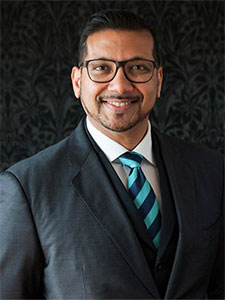

One of the more common questions women ask when considering breast augmentation surgery, I sat down with Dr Rohit Kumar to find out more about breastfeeding after breast surgery, why he’s seeing more patients needing revisions and why it’s essential you choose a qualified and experienced surgeon for your procedure.
PSH: Can you talk us through why there is a small chance a woman may not be able to breastfeed again after having breast surgeries? Does the skill of the surgeon have any effect on this outcome?
Dr Rohit Kumar: When most people have breast surgery, whether that’s breast augmentation or breast reduction, or any form of breast surgery, I guess there’s a small chance that you might actually damage the ducts. If you damage the ducts that supply the nipple areola complex, then there is a small chance that you might not be able to breastfeed.
What I normally tell my patients is if you look into the community, approximately a third of the patients will not be able to breastfeed. About a third of patients will be able to breastfeed with assistance, and about a third of patients can breastfeed normally. Realistically, if you look at that group of people, then two thirds of patients can’t breastfeed, or need assistance breastfeeding.
It’s actually quite a small population that can breastfeed just off the cuff. If you’re going to have breast augmentation, or breast surgery, you need to be with the surgeon who’s actually aware of these facts, and is quite cautious and careful about their technique, and how they’re doing it, so that you don’t end up in the two thirds, you still stay in that one third if you’re going to be there.
It’s an interesting one to speak to your patients about. We have multiple cohorts of patients. Some have already had their children, and some who obviously are going to be thinking about having children following their surgery. They need to be in good hands, who are aware of the anatomy, who are aware of how these ducts actually come through and then feed through the nipple. You need a surgeon that’s aware of that anatomical variation that might be present as well. Hopefully if they’re designing surgery, they can then design it to avoid that damage.
PSH: How often do you see patients needing breast surgery revisions after botched surgery either overseas or by less skilled surgeons?
Dr Rohit Kumar: One aspect of my practice, which unfortunately is actually becoming more popular, but I’d like it not to be popular, but it’s certainly something that’s becoming more so, is seeing patients who have had surgery done in other locations, whether that’s overseas, or by other surgeons, not ASPS trained, or properly qualified plastic surgeons.
Quite often these patients need revision. That’s not to say that patients who have been seen by plastic surgeons don’t need revisions. We all have a complication and revision rate. The difference between a plastic surgeon, and say somebody else doing your surgery, lies in the fact that as a trained plastic surgeon, you have the skills to correct the problems.
Should one of these issues arise with your patient, then you certainly have the abilities to correct it for your patient. Often we find that if the operation has been done overseas, or if it’s been done by a lower qualified cosmetic surgeon for example, they might have been able to do the primary surgery, but they certainly do not have the skills to do the corrective surgery afterwards, which leaves the patient in limbo and requires them to come across to a plastic surgeon to have it corrected. It also then means extra costs. Often most plastic surgeons, if you’ve done your operation with them, will look after you, and certainly try to minimise your costs if they were going to then do the corrective surgery.
I think with any surgery that you do, it’s actually a relationship. It’s a conversation between the patient and the surgeon. The surgeon has responsibilities to try and do the operation to their best ability, but the patient also has an equal responsibility in maintaining the post-operative care, and in maintaining what the surgeon has asked them to do to ensure that the overall result is what both surgeon and patient were expecting.
As a surgeon, you would ask your patient specific things. Things such as, not exercising for a certain amount of time, to start your exercising slowly for example. You would ask your patients to take antibiotics. You would ask your patient to wear a garment post-operatively. There comes a time where you would be massaging and managing your scars. These are things that you require your patient to do on your behalf, but also on their behalf, to ensure that their overall result is the best it can be.
If the surgeon does everything right, or if the surgeon tries to do everything they can, but then the second half, which is the recovery phase is out of kilter, then the end result, whether that’s six months, or a year, or two years down the track, is not going to be as optimum as if both groups had done the things together.
To find out more about Dr Rohit Kumar at Sydney Cosmetic Sanctuary check out his listing on our website.
Further Information Related to Breastfeeding after Breast Augmentation
- Breast Implants Perth | Breast Augmentationby Dr Guy Watts
- All about Silicone Breast Implantsby Dr Bish Soliman
- Understanding Breast Anatomy and Breast Cosmetic Surgery by Dr Carmen Munteanu
- Types of Breast Implant Incisionsby Dr Jake Lim
- What Are Puffy Nipples and How to Get Rid of Them– Dr Michael Kernohan
